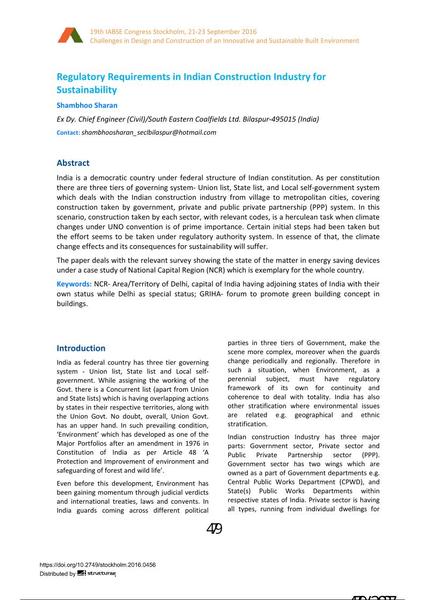Regulatory Requirements in Indian Construction Industry for Sustainability

|
|
|||||||||||
Détails bibliographiques
| Auteur(s): |
Shambhoo Sharan
(Ex Dy. Chief Engineer (Civil)/South Eastern Coalfields Ltd. Bilaspur-495015 (India))
|
||||
|---|---|---|---|---|---|
| Médium: | papier de conférence | ||||
| Langue(s): | anglais | ||||
| Conférence: | IABSE Congress: Challenges in Design and Construction of an Innovative and Sustainable Built Environment, Stockholm, Sweden, 21-23 September 2016 | ||||
| Publié dans: | IABSE Congress Stockholm, 2016 | ||||
|
|||||
| Page(s): | 479-487 | ||||
| Nombre total de pages (du PDF): | 9 | ||||
| Année: | 2016 | ||||
| DOI: | 10.2749/stockholm.2016.0456 | ||||
| Abstrait: |
India is a democratic country under federal structure of Indian constitution. As per constitution there are three tiers of governing system- Union list, State list, and Local self-government system which deals with the Indian construction industry from village to metropolitan cities, covering construction taken by government, private and public private partnership (PPP) system. In this scenario, construction taken by each sector, with relevant codes, is a herculean task when climate changes under UNO convention is of prime importance. Certain initial steps had been taken but the effort seems to be taken under regulatory authority system. In essence of that, the climate change effects and its consequences for sustainability will suffer. The paper deals with the relevant survey showing the state of the matter in energy saving devices under a case study of National Capital Region (NCR) which is exemplary for the whole country. |
||||
